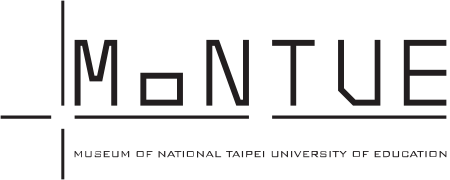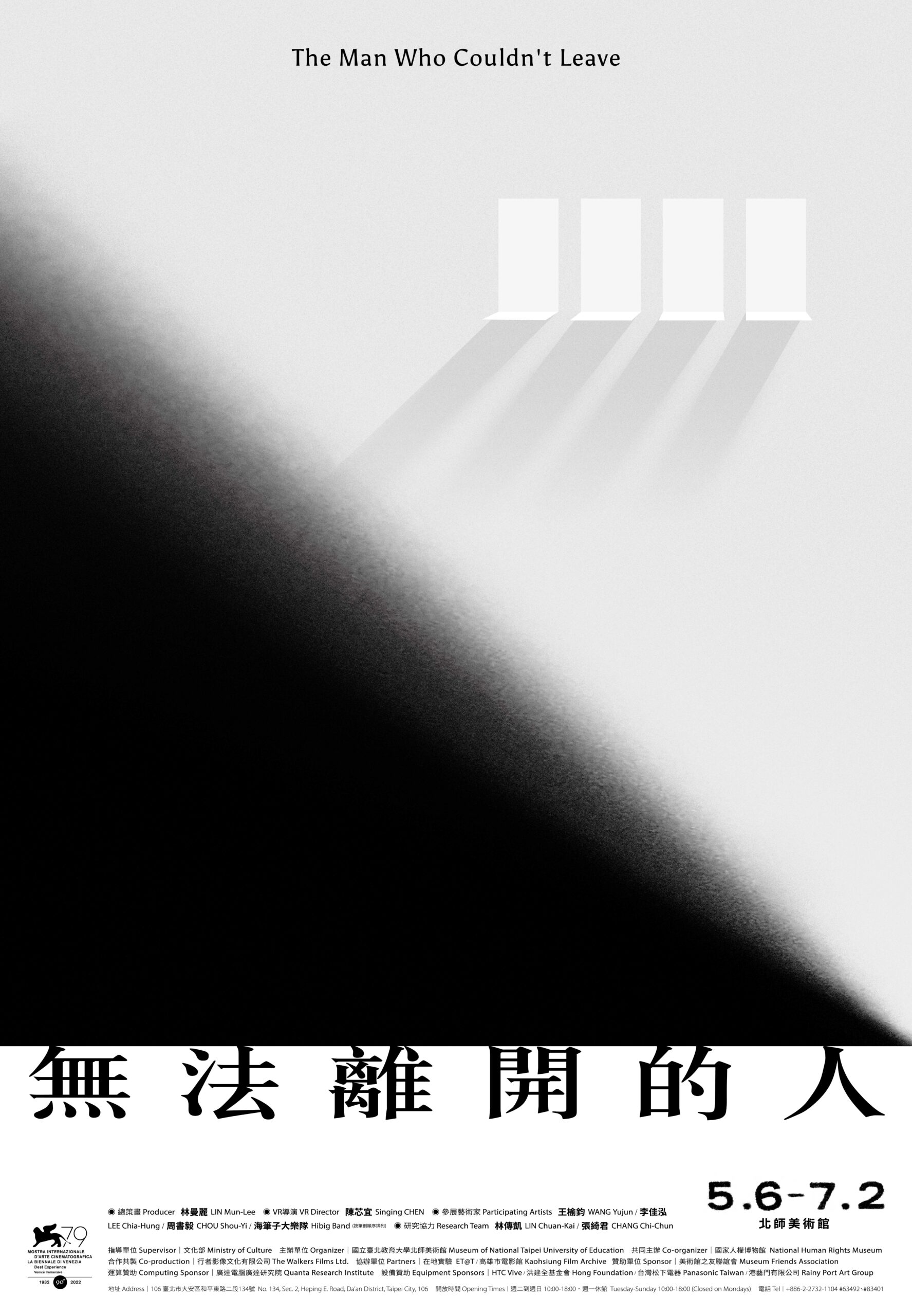2023.05.06 - 2023.07.02The Man Who Couldn’t Leave
The struggle of man against power is the struggle of memory against forgetting.
——Milan Kundera
As a contemporary art museum, the Museum of National Taipei University of Education (MoNTUE) has consistently experimented with innovative approaches to exhibitions over the years: in 2014, the MoNTUE and film director Tsai Ming-Liang co-curated Stray Dogs at the Museum and No No Sleep, which marked a groundbreaking attempt at transforming “films” into “exhibitions” in an art museum. For cinematic creations, being showcased in an art museum embodies a process of re-creation, which involves employing the thinking of spatial arrangements to re-initiate dialogues with the original narrative of a film, thus engendering novel viewing perspectives.
Virtual reality (VR) has built upon the technology of stereoscopes invented in the early 20th century and come to flourish in the 21st century. From Google 3D Street View and Google Cardboard to VR headsets launched by different tech companies, the technology described in Aldous Huxley’s Brave New World that can “immerse viewers more deeply in the world of films” has finally arrived. With 360-degree panoramic view, a unique sense of immersion, and the freedom to choose viewing angles, such equipment has fundamentally altered how films are watched and produced. The instant that a viewer puts on a VR headset, they seems to be transported into another dimension—while one’s body remains in one place, one’s sense of vision enters a different world. So, what sensory experience can be created by viewing a “virtual” film in the “physical” space of an art museum?
With experience in documentary, feature film and TV series making, as well as theatrical production, Singing Chen has brilliantly utilized the texture of “virtuality” to explore the subject of memory and disappearance in her VR debut, Afterimage for Tomorrow (2018), which unlocks her pathway of using space as filmic narrative. In 2020, as part of her continuing exploration of VR, Chen was commissioned by the National Human Rights Museum to produce The Man Who Couldn’t Leave—a story themed on the White Terror and a film that she had been thinking about for years. Evocative of the past, this 360-degree film pushes the bounds of VR narratives, and challenges viewers’ sensory limits. It brings together experiences of multiple political victims from the period of the White Terror while taking the wax museum in the Green Island White Terror Memorial Park as its starting point. The director uses an undeliverable letter of farewell to transcend history and time, national borders and generations, awakening people’s feelings with regards to these traumatic memories and the issue of human rights. This film was awarded the highest honor, the “Best Experience,” at Venice Immersive of the 2022 Venice Film Festival, and was highly commended by the jury for “show[ing] us the true potential of 360 cinema.”
The Man Who Couldn’t Leave is co-organized by the MoNTUE and the National Human Rights Museum, with support from ET@T and the Kaohsiung Film Archive. The collaboration between the exhibition producer Lin Mun-Lee and director Singing Chen reveals an interdisciplinary exhibition centering on the experience of immersion. In order to expand the sensory experience of the VR work, the MoNTUE has created a special viewing space that takes the advantage of the distinctive interplay of light and shadow in the museum. Multiple spatial layers are crafted to guide the audience through the interface between “virtuality” and “reality.” Extending to the history of Taiwan’s White Terror during the 1950s and the 1960s in the VR work’s backdrop, scholar Lin Chuan-Kai moves away from traditional displays of historical archives to employ a situation-based curatorial approach. Together with artists Wang Yujun and Lee Chia-Hung, this section utilizes woodblocks, survivors’ spoken accounts, original letters of political prisoners extensively censored by the state, handmade objects created under the barren circumstances of detention centers, and dreams of political victims to capture the gruesome atmosphere of the Detention Center of the Martial Law Division and draw out the past where we cannot escape and easily bid farewell.
This exhibition also features behind-the-scenes details of Chen’s VR production, including manuscripts, scripts, models, design plans, raw VR files, filming props, and interviews, which collectively allow the audience to comprehend the virtual aspects and the reality-making of virtual reality. During the exhibition, the basement space of the MoNTUE functions as a “site,” where different events take place—it is the work site of the director, the rehearsal and performance site of physical movement and script reading respectively by Chou Shu-Yi and Hibigband, as well as the site of interviews and special screenings by ET@T.
Milan Kundera once stated that “the struggle of man against power is the struggle of memory against forgetting.” Through listening and excavating, we are able to traverse the hindering fog of history to eventually reach the subterraneous realm buried under the silenced memories of individuals. Through transformation and artistic creation, we are finally able to reconstruct the mental landscape of this group of people, bringing them back to the present from the depths of memory to re-establish connections and make them part of our collective memory.

